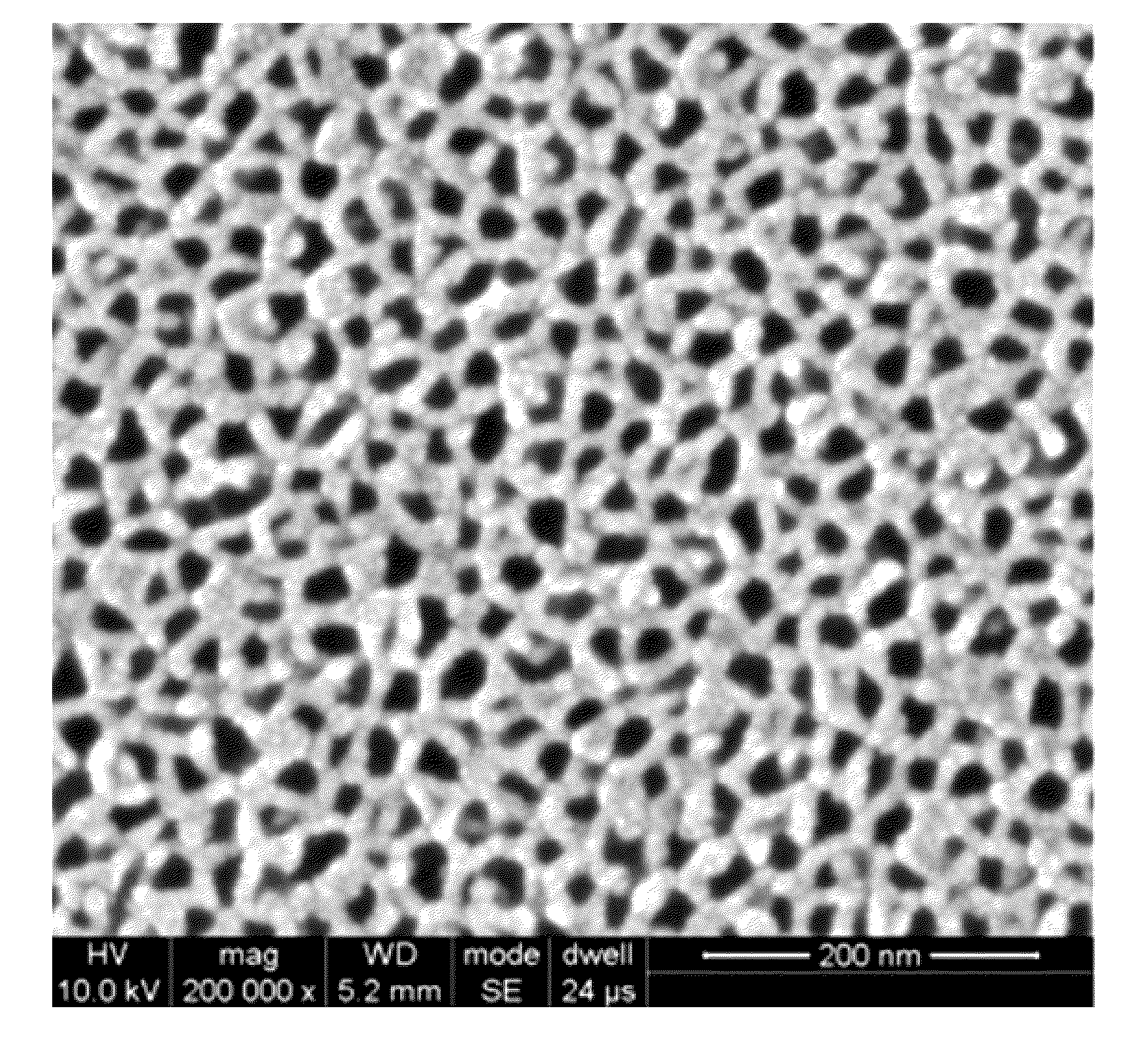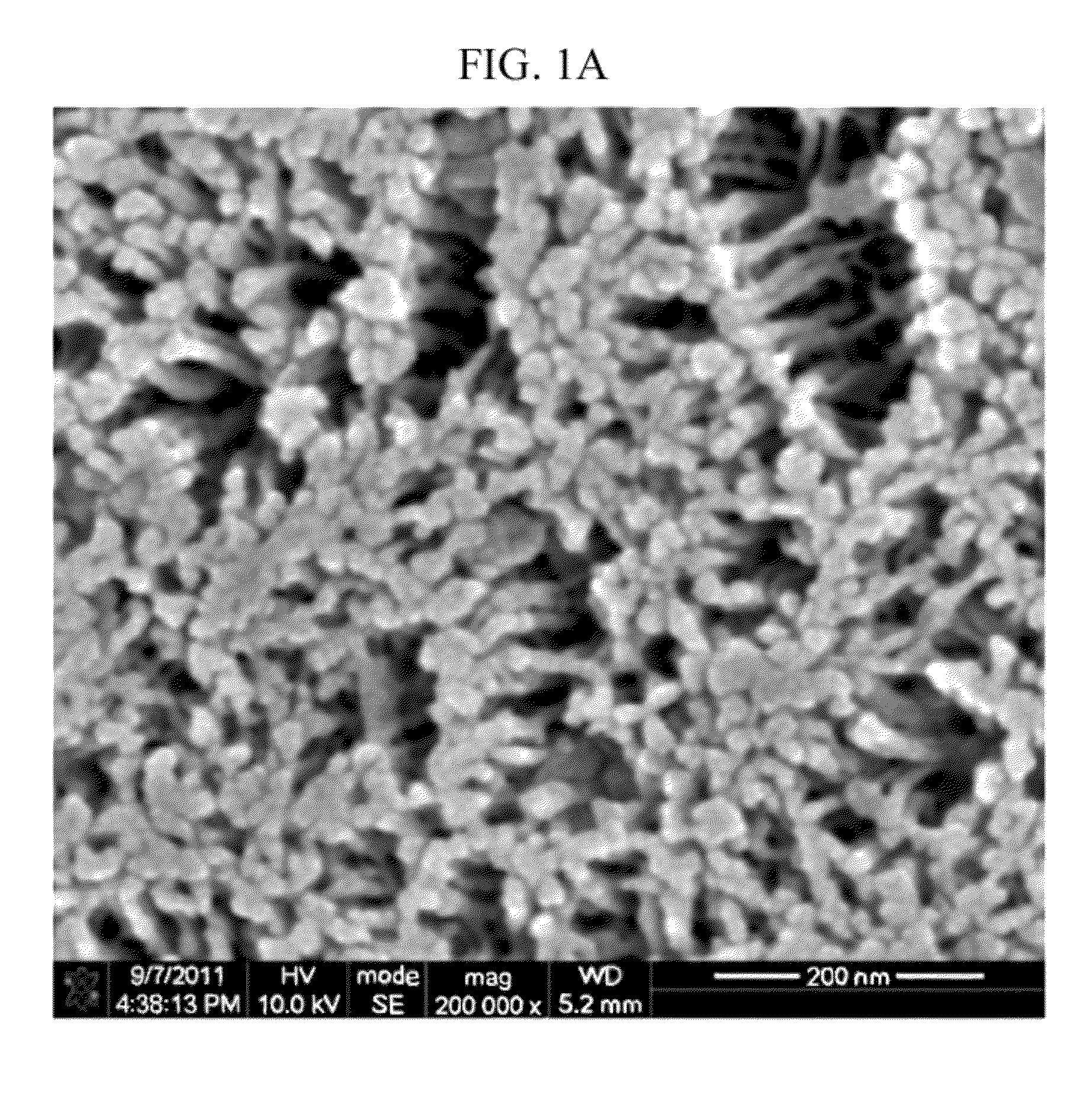Method of fabricating porous film structure using dry processes and porous film structures fabricated by the same
a technology of porous film and dry process, which is applied in the direction of transportation and packaging, chemistry apparatus and processes, paper/cardboard articles, etc., can solve the problems of high environmental impact, difficult to actually commercialize and mass produce mesoporous thin film structures, and high process control effort. , to achieve the effect of facilitating process control
- Summary
- Abstract
- Description
- Claims
- Application Information
AI Technical Summary
Benefits of technology
Problems solved by technology
Method used
Image
Examples
example 1
[0039]To form a thin film structure including at least two elements, Pt and Si were sputter-deposited at the same time. First, a Ti adhesive layer was deposited on a surface of an n-doped Si (100) wafer to 3 nm, and a Pt underlayer was then deposited to 30 nm. Next, a Pt—Si cosputter thin film was deposited to 150 nm. Positions of a Pt target and an Si target and their distances from a sample were adjusted so that a content of Si in the Pt—Si thin film could reach 80% by volume.
[0040]To remove elemental Si from the thin film, the thin film was etched for 30 seconds at a XeF2 pressure of 1 Ton using a non-plasma-type XeF2 dry etcher, thereby removing Si in the thin film. FIG. 1A and FIG. 1B are scanning electron microscope images of a Pt porous thin film obtained by this method. FIG. 1A shows the fabricated porous thin film from the top (top view), and FIG. 1B shows the fabricated porous thin film in cross-section from the side (cross-sectional view). With the reference to FIG. 1A, i...
example 2
[0042]A Pt—Si cosputter thin film having a thickness of 100 nm was fabricated in the same manner as in Example 1. Thereafter, the Pt—Si cosputter thin film was dry-etched using a plasma-type RIE method. SF6 gas was converted into plasma at 50 mTorr and an RF power of 200 W, and Si was then removed by dry-etching for 1 minute. Also, O2 gas was converted into plasma under the same conditions, and the plasma cleaning was performed together. FIG. 2 is a top view of the Pt porous thin film obtained via this method. It can be seen that the thin film had a porous structure having a size of approximately 10 nm.
example 3
[0043]An Au—Si cosputter thin film having a thickness of 200 nm was fabricated in the same manner as in Example 1. Thereafter, the Au—Si cosputter thin film was dry-etched for 1 minute in the same manner as in Example 1 using non-plasma-type XeF2 dry etcher to remove elemental Si. FIG. 3 is a top view of the Au porous thin film obtained via this method. It can be seen that the thin film showed similar porosity as in Example 1, but had a porous structure having a size of 10 nm to several tens of nanometers.
PUM
| Property | Measurement | Unit |
|---|---|---|
| Thickness | aaaaa | aaaaa |
| Size | aaaaa | aaaaa |
| Structure | aaaaa | aaaaa |
Abstract
Description
Claims
Application Information
 Login to View More
Login to View More - R&D
- Intellectual Property
- Life Sciences
- Materials
- Tech Scout
- Unparalleled Data Quality
- Higher Quality Content
- 60% Fewer Hallucinations
Browse by: Latest US Patents, China's latest patents, Technical Efficacy Thesaurus, Application Domain, Technology Topic, Popular Technical Reports.
© 2025 PatSnap. All rights reserved.Legal|Privacy policy|Modern Slavery Act Transparency Statement|Sitemap|About US| Contact US: help@patsnap.com



